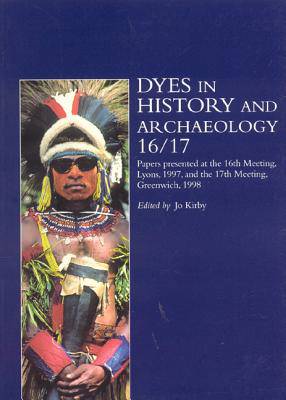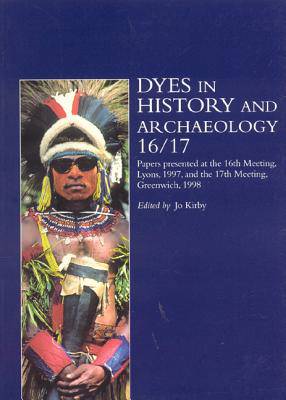
- Afhalen na 1 uur in een winkel met voorraad
- Gratis thuislevering in België vanaf € 30
- Ruim aanbod met 7 miljoen producten
- Afhalen na 1 uur in een winkel met voorraad
- Gratis thuislevering in België vanaf € 30
- Ruim aanbod met 7 miljoen producten
Zoeken
Dyes in History and Archaeology 16/17
Paperback | Engels
€ 129,95
+ 259 punten
Omschrijving
Interest in all aspects of dyestuffs has grown considerably since an informal meeting of researchers twenty years ago developed into the annual meetings of Dyes in History and Archaeology, with the journal of the same name publishing a selection of papers presented. Analysis has revealed that the early 20th-century clothing and textile designer, Mariano Fortuny, used natural dyes for his glorious silks and cottons. Natural indigo is still used in some parts of the world, but dyeing with it is harder, less pleasant work than is popularly supposed. Species of Coleus - one of which is the flame nettle, a popular houseplant in the West - are used as sources of red, blue, purple and green dyes in Papua New Guinea and other parts of Asia. Research into the history of dyestuffs covers many disciplines and their chemistry is also of fundamental interest: the development of synthetic dyes was a breakthrough for chemical technology and industrial processes, and analysis has enabled the dyestuffs used on historical textiles and in pigments used in paintings to be identified. These topics were among those presented at the 16th meeting, held in Lyons in 1997, and the 17th meeting, held in Greenwich, London in 1998, and discussed in the papers included in this book. They reveal the variety of disciplines with a common interest in this fascinating, colourful world.
Specificaties
Betrokkenen
- Uitgeverij:
Inhoud
- Aantal bladzijden:
- 240
- Taal:
- Engels
Eigenschappen
- Productcode (EAN):
- 9781873132975
- Verschijningsdatum:
- 1/12/2001
- Uitvoering:
- Paperback
- Formaat:
- Trade paperback (VS)
- Afmetingen:
- 173 mm x 244 mm
- Gewicht:
- 616 g

Alleen bij Standaard Boekhandel
+ 259 punten op je klantenkaart van Standaard Boekhandel
Beoordelingen
We publiceren alleen reviews die voldoen aan de voorwaarden voor reviews. Bekijk onze voorwaarden voor reviews.







